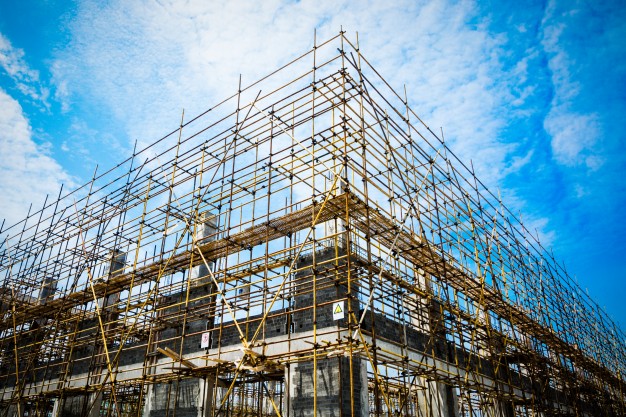Can The ‘Design And Build’ Model Transform Interior Fit-Out Projects In Commercial Realty?
December 2018
We look at the advantages of the design and build model of executing projects and whether it is likely to become a preferred route for corporates, for their office fit-outs ‘Design and build’ is a globally popular corporate fit-out delivery method, where both, the design and execution, are entrusted to one single agency. The model has been in existence, as a preferred procurement route for projects of various sizes, in the western and middle-east countries for quite some time. In India, this model has taken time to become a preferred mode of delivering corporate fit-outs. As per an industry research, globally, 85 per cent of interior fit-out projects, with a value of less than USD 57,00,000 are procured through the design and build model.
The traditional approach
Indian corporate clients had traditionally employed ‘design-bid-build’, as the project delivery method of choice. This traditional approach required the client to appoint the architect first, followed by the various contractors required to execute the project. All these vendors are deployed after following a tendering process, using an item rate contract template. The significant overlap of design and construction in most projects, makes this approach practical and realistic. It still remains a strong model of project delivery but has its disadvantages, when offices need to be built quickly, within a guaranteed amount.
Advantages of the design and build approach
From 2008 onwards, Indian corporates also started executing projects using the design and build model. Multi-national companies like Accenture, Cognizant and Capgemini, were the first to use this model extensively in India but soon everybody started exploring it as a viable procurement model. The advantages were manifold. The client suddenly had one single agency to interact with during the delivery period. Costs would also be frozen, to a large extent, right from the beginning, thanks to the signed off layout, clear specifications and well-defined scope of work. Tight timelines could be achieved, as the design and build vendors were able to commence work faster, by reducing the procurement process. The entire coordination between design, procurement and construction, would fall under the design and build vendor.
Impact of the design and build model on Indian real estate
The adoption of the design and build model has helped to transform Indian firms in the construction industry. Professional project management consultancy (PMC) firms have started their own design and build verticals, as normal extensions of their previous responsibilities. Reputed architectural firms and large interior vendors have also joined the bandwagon. Design firms are strengthening their execution capabilities, while interior contractors are learning how to coordinate professionally with MEP (mechanical, electrical and plumbing) vendors. The corporate interior turnkey solution market, is now growing at a much faster pace and will only accelerate further in the future. The fact is that there were very few agencies in India that were equally proficient in design and execution. Experienced resources in both the fields are needed inside one organisation, to deliver an impressive workplace to the client. The hope is that, as more agencies start gaining experience in the design and build form of delivery, their organisations also will become more design-centric and delivery-oriented at the same time.
The challenges of the design and build model
The pressure of procurement cost on this model, is causing dilution of design, which is a matter of concern. Corporates’ procurement verticals are still grappling with the right way to finalise a design and build vendor, in the absence of accurate bill of materials and diverse designs on the table. It is important to shortlist the right set of financially strong and capable vendors, while doing a design and build project. The process forces the client team to be clear about what kind of office they want to build, at what cost and within what time. The risk of venturing into a design and build model without clarity from the end-user, is high and not advisable.
The future of design and build in India
With increasing demand, the design and build model is firmly positioned, vis-à-vis the corporate fit-out and design map, for all projects. Companies are expected to turn to this model for their office fit-outs, due to the constant struggle for space within a limited timeframe. As per a global survey, a majority of owners indicated using or anticipate using the design and build approach for their projects, in the next five years. This model allows for complex projects to be sourced and delivered within an optimum time and cost, which was not feasible using the traditional approach. Global estimates peg the construction spend on the design and build model in the assessed segments (office, commercial, manufacturing, educational, amusement and recreation, healthcare, transportation, etc.) to account for 44 per cent and reach over USD 320 billion in 2021. According to a recent market forecast, design and build firms and interior designers in India, are expecting an increase of more than 75 per cent in gross revenue this year, as compared to 2017. Finally, design and build is not just a mere approach towards project delivery but is also perceived as an attitude of the people involved in the project. This model is intended to be a highly collaborative, fully integrated process that is built on trust, mutual respect, teamwork, innovation and creative problem solving.
Also read: When old is gold: Add a vintage touch to your home décor
Back to All Thane Real Estate Resources, Thane Property News and Articles
Share This:
To Know More about Thane Real Estate Projects Visit CREDAI MCHI Thane Unit
Source: housing.com


